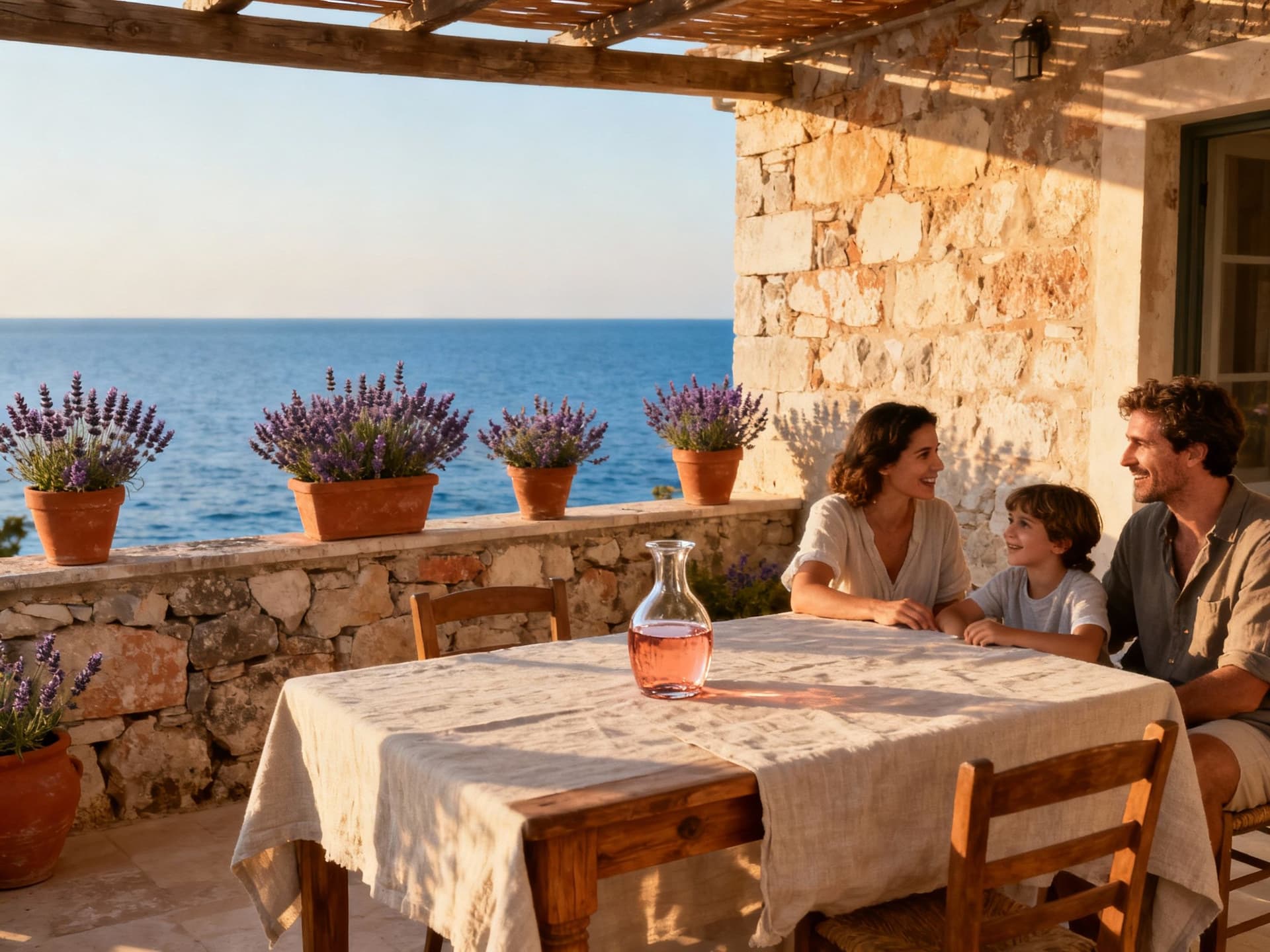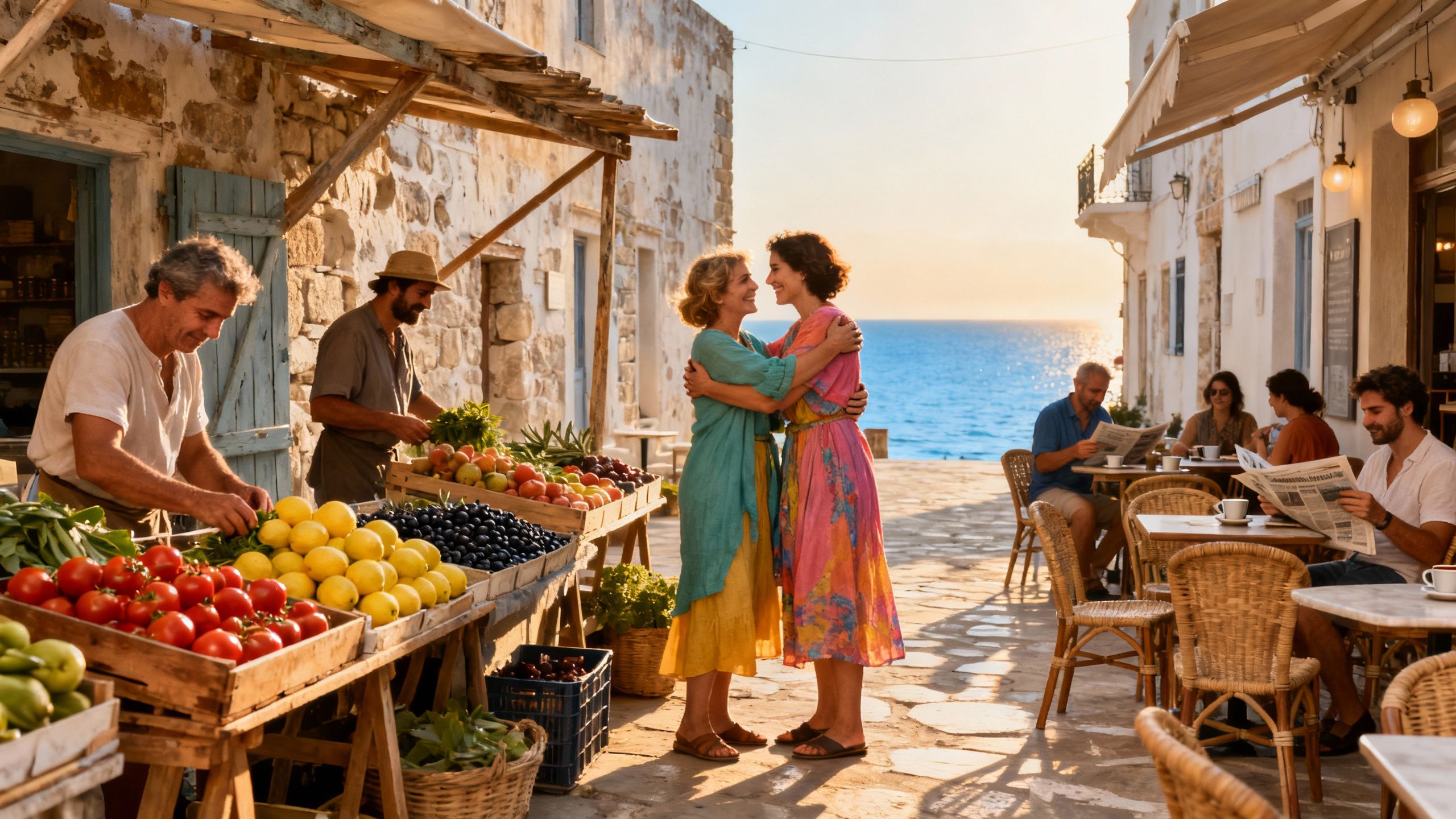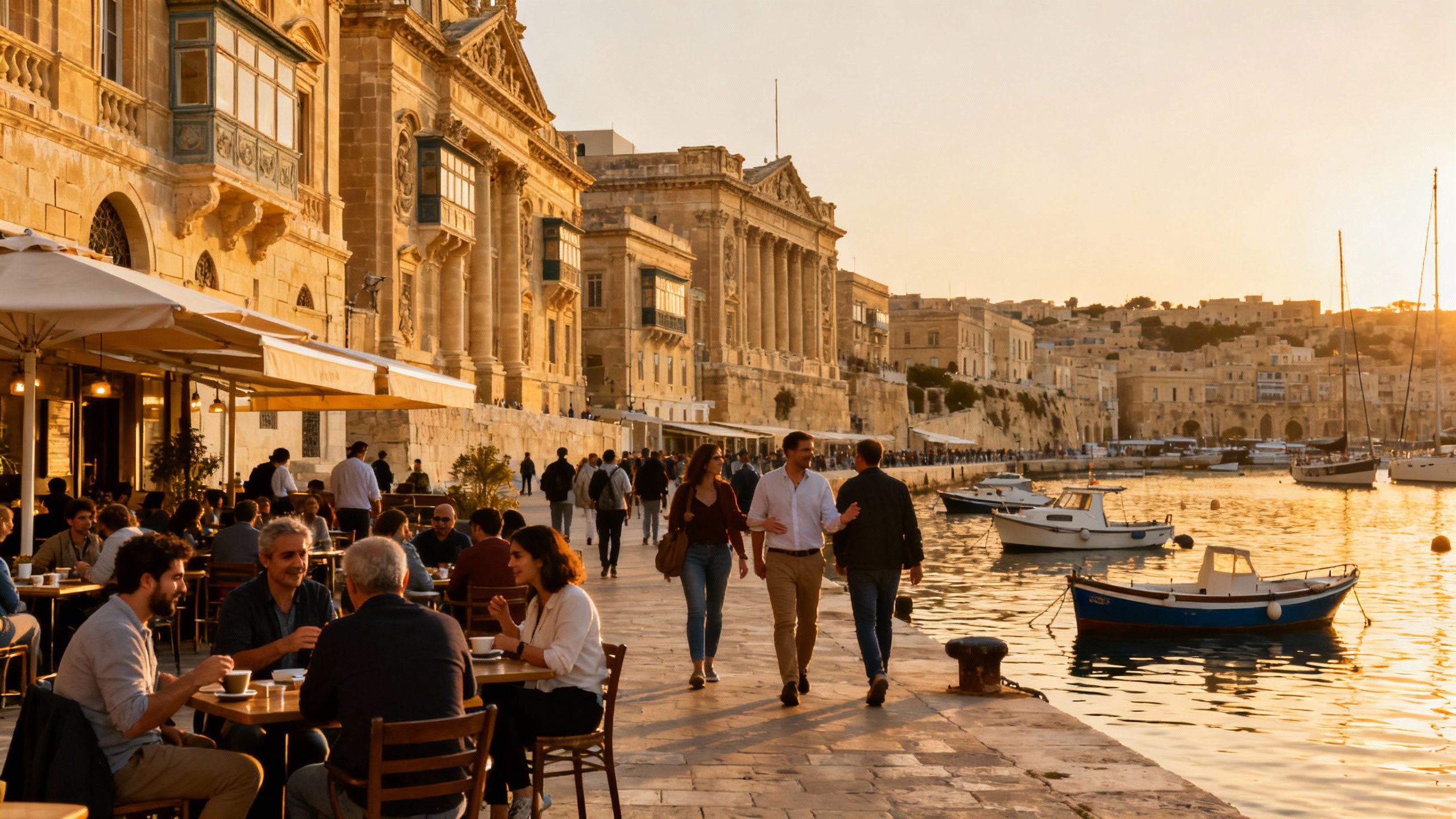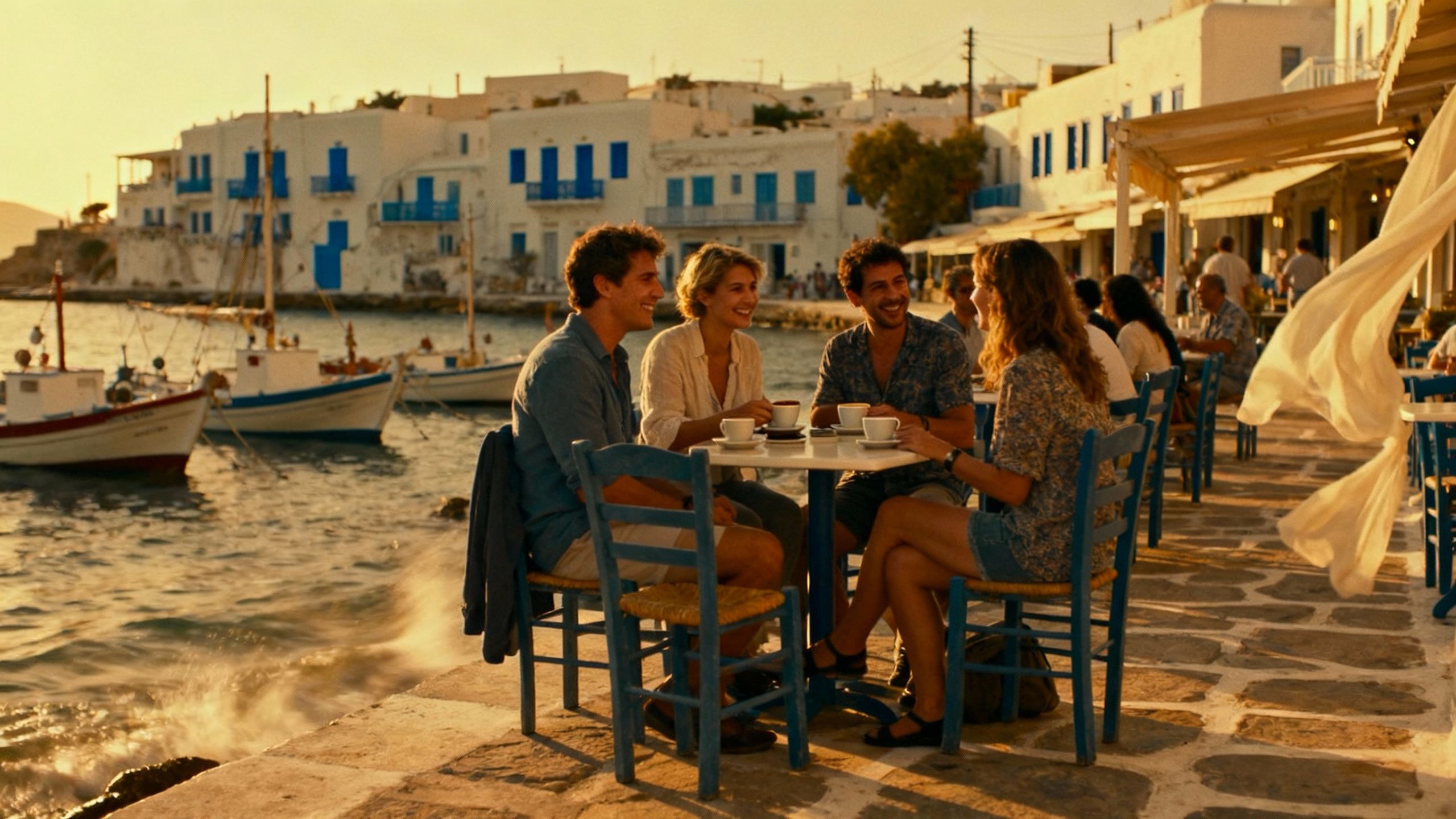The Reciprocity Rule That Shapes Buying in Croatia
How Croatia’s reciprocity rule and local procedures shape where foreigners can buy — practical, sensory guidance for buyers aligning lifestyle with the law.
Imagine an early morning in Split: the marble steps of Diocletian’s Palace cool beneath your hand, a baker slides fresh pogača into the display, and a fisherman mends nets beneath the harbour light. This is the rhythm Croatia sells — Adriatic mornings, ristras of drying peppers, markets that close only after neighbours have argued and made peace. For many international buyers the dream begins with this sensorial promise. Yet the path from daydream to deed requires attention to a single, governing reality: who may legally own which plot, and how reciprocity and local procedure shape where you can make that life permanent.
Living Croatia: neighbourhoods, seasons and everyday texture

Croatia’s character changes with geography. In Zagreb, boulevards and cafes sustain a measured urban life; in Dubrovnik the old town’s limestone and baroque facades hum with tourism choreography; along the Dalmatian coast, villages such as Bol (on Brač) and Cavtat trade sleepy winters for kinetic summers. Everyday life is deliberate: espresso at 10am, a late lunch from market fish, and evenings that favour long conversation over wine. For buyers, this variety matters — your property choice will determine rituals, not only returns.
Coast: stone alleys, terraces and the sea’s timetable
On the Adriatic coast, rhythm and return on investment can diverge. Places like Hvar’s Stari Grad or Korčula’s old harbour offer extraordinary provenance — Venetian facades, narrow streets that collect light, terraces that deliver sea air and late sunsets. Yet these pockets are seasonal: cafés and galleries pulse in summer and quiet in winter. That seasonal contraction shapes maintenance, rental potential and the kind of community you will join; a homeowner seeking year-round neighbours will look to smaller ports and islands where fishing families and remote workers are establishing permanence.
Inland and Zagreb: civic life, museums and daily conveniences
Zagreb’s neighbourhoods — from the Gründerzeit façades of Ilica to the calmer lanes of Pantovčak — offer a different cadence: year-round institutions, international schools, and a quieter cultural season that suits families and professionals. Smaller continental towns such as Varaždin and Osijek prize architectural heritage and quieter property markets with different value dynamics. For international buyers who prioritise services and integration over holiday-rental yields, inland Croatia frequently represents better long-term livability.
The legal fact that most shapes where foreigners can buy

Croatia’s acquisition regime rests on a simple principle: EU (and EEA/Swiss) nationals generally enjoy the same acquisition rights as Croatian citizens, while other foreign nationals face a reciprocity and administrative-consent regime. That means the practical map of opportunity is not only coastal chic or inland calm but the nationality of the buyer and whether their country offers Croatians reciprocal rights. The Ministry of Justice administers consent requests and the rules are deliberately case‑sensitive — the same plot might be freely sold to an EU citizen and require ministerial approval for a non‑EU purchaser. Understanding this constraint early will save time and avoid costly contract collapses.
What reciprocity means in practice
Reciprocity is pragmatic: if citizens of your country cannot buy Croatian land under their own law, Croatian authorities may refuse permission to you. In practice, EU and Swiss buyers avoid this hurdle; non‑EU buyers should check the Ministry’s published list of reciprocal countries and be prepared for a written application — it may require proof of urban‑planning status, seller ownership documents, and a local representative. Importantly, a denied application carries a five‑year bar against re‑application for the same property, so an upfront check is not paperwork hair‑splitting but essential risk management.
Special cases to note: agricultural land, protected zones and companies
Agricultural land and certain protected areas remain tightly regulated; acquisition is often prohibited or limited. Likewise, foreign legal entities must navigate additional scrutiny — buying through a Croatian company is possible but triggers checks on whether the company is genuinely established and not merely a vehicle to hold land. If your interest lies in vineyards, olive groves or rural plots, budget for extra legal work and longer timelines: these properties carry both heritage value and heightened regulatory attention.
Making the move: process, people and practical steps
The dream of terraces and tinnies must meet procedure: confirm reciprocity, commission a land‑registry extract (zemljišna knjiga), arrange an energy performance certificate if relevant, and ensure funds and notarisation are in order. Recent DZS data show sustained price growth across regions — coastal and Zagreb markets outpaced many interior areas — so timing and location choices influence both lifestyle and capital exposure. A local attorney and a detail‑focused agent are not optional; they translate municipal plans, verify encumbrances and structure conditional offers that respect Croatia’s administrative checkpoints.
Property types and how they shape daily life
A restored Dalmatian stone house will reward you with thick walls, small windows and cool summers, but higher upkeep and stricter heritage rules; a modern apartment in Split offers convenience and rental liquidity but less architectural character. New builds near Dubrovnik command premium rents in summer yet risk quieter winters; inland family homes provide garden space and stronger year‑round communities. Match the property fabric to your intended rhythm: seasonal homeowner, year‑round resident, or hybrid investor who rents for income.
Working with local experts who preserve the lifestyle
Agencies serve as culture‑translators — not merely brokers. A good local firm will introduce you to a notary, urban‑planning officers, an English‑speaking tax advisor and craftsmen who understand lime mortar and Venetian plaster. Insist on references for restorations and a clear description of post‑sale responsibilities: water access, septic compliance, and coastal setbacks are often localised and can surprise even experienced buyers. Your team should secure conditional acceptance of offers pending reciprocity clearance rather than exposing you to forfeitable deposits.
Practical checklist before signing
Before you sign, verify three things: the land‑register extract shows clean title and correct seller details; the local planning authority confirms permitted uses and any pending changes; and the Ministry of Justice position on reciprocity if you are a non‑EU national. Assemble these documents early and let them shape your offer terms. This reduces the risk of administrative refusal — a pragmatic protection that safeguards both your capital and the life you imagine living here.
- Engage a bilingual notary and lawyer experienced in Croatian property law
- Order a zemljišna knjiga extract and certificate of urban‑planning status
- Confirm reciprocity status with the Ministry before committing funds
- Budget for notary fees, transfer taxes and possible administrative delays
Insider knowledge: what expats often wish they’d known
Expats commonly under‑estimate the seasonal flip of services and the paperwork lead time. A seaside village that feels full in July can be quiet in November; utilities, seasonal businesses and ferry timetables affect both convenience and operating costs. Recent DZS indices indicate meaningful price appreciation across 2024–2025, particularly in Zagreb and the Jadran, which changes the calculus between buying for life and buying for yield. Those who plan for full‑time residency find that the slower seasons reveal the true community — and whether it suits your long‑term intentions.
Cultural integration and everyday rules
Croatians prize neighbourliness: introductions, local markets and municipal meetings matter. Learning basic Croatian phrases, respecting local hours (a later lunch and quieter Sundays) and engaging with community events will make transitions smoother. For property owners, municipal relationships ease permissions for restorations and small extensions — bureaucracy is real, but so is the advantage of goodwill.
Longer view: stewardship, taxes and generational thinking
Treat a Croatian home as an object of stewardship. Consider inheritance rules and local taxes early — they differ from other jurisdictions and matter for generational planning. Engage a tax advisor conversant in Croatian law to model holding costs, local property taxes and potential rental income tax. Thoughtful stewardship secures both lifestyle and legacy.
- Step‑by‑step for a low‑friction purchase
- Confirm nationality/reciprocity status and request Ministry guidance if non‑EU
- Commission zemljišna knjiga extract and local planning certificate
- Draft conditional purchase agreement with escrowed deposit and admin contingencies
- Complete notary transfer, register title, and plan immediate property stewardship
If this feels like many steps, that is because it is — but the reward is a life lived in places that balance weathered stone, market mornings and a sense of provenance. Croatia invites a slow, enduring style of ownership; approach it with a team that understands both the Adriatic’s sensual appeal and the administrative scaffolding that preserves it.
Conclusion: fall in love with the place, prepare for the rules. Begin by visiting neighbourhoods across seasons — walk Ulica Republike in Zagreb, sip coffee at Luka Market in Split, and spend a November evening in Rovinj’s harbour. Then assemble your local team, confirm reciprocity, and let clear contingencies protect your deposit. With careful stewardship, a Croatian home becomes more than an acquisition: it becomes the setting for years of measured mornings and convivial evenings.
Having moved from Stockholm to Marbella in 2018, I help Scandinavian buyers navigate Spanish property law, restoration quality, and value through authentic provenance.


